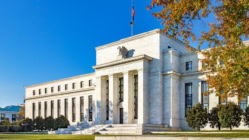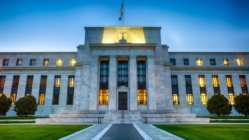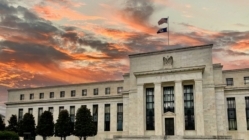Inflation Comes In Hot But Rates Hold
The Consumer Price Index reading for September came out hotter than expected today, but rates only moved a bit higher. The reason is partially because the markets are learning to dig into these numbers and realize that they are often just… wrong.
Barry Habib expressed his frustrations in no uncertain terms today in his morning update (behind a paywall), explaining that seasonal adjustments, a focus on misleading shelter costs, and a focus on very misleading car insurance numbers (higher because of thefts that have nothing to do with inflation) make CPI numbers unreliable at best.
Likewise Jeff Snider had a field day too, explaining in this tweet, 🚨 ALERT: Inflation isn’t what they’ve been feeding you 🚨, why inflation reports are misleading and that a “deflationary recession” is more likely.
SO, it looks like the Fed will continue with its “higher for longer” policy until something not only breaks but explodes. What that explosion will be is anybody’s guess, but it could be a major stock market correction, a severe banking crisis, or a currency crisis overseas – or a combination of them all like we saw in 2008.
In any case, this is important to understand as it applies to my analysis below in regard to “Inflation Relief Loans.”
Inflation Relief Loans = Lender-paid Temporary Buydowns
There are a couple of very popular social media accounts posting videos about Inflation Relief Loans where lenders will lower your rate by 1% (below market) for a full year.
Two excellent examples are HERE and HERE (the videos are very short and well-done, so I recommend them).
BUT – do these “inflation relief loans” represent free money given away by lenders desperate for business in what is the slowest market in history?
Uhh… no.
Inflation relief loans are simply temporary buydowns for one year that lenders pay for. As most readers know, I love temporary buydowns, as we tout them often and close many.
Here is my blog about them: The Beauty of Buydowns.
As a quick reminder, temporary buydowns offer borrowers artificially lower rates for one, two, or three years, known as a 1-1 buydown, a 2-1 buydown, or 3-2-1 buydown. With a 3-2-1 buydown, a borrower’s rate is 3% lower than the market rate in year one, 2% lower in year two, and 1% lower in year 3. With a 1-1 buydown, a borrower’s rate is simply 1% lower for one year – and this is the type of buydown that the “Inflation Relief Loans” are.
The cost of temporary buydowns is simply the total of the payments not paid. Those costs CANNOT be borne by the buyer; they can only be paid by third parties like the seller or the lender (or even a real estate agent).
BUT, HERE’S THE KICKER: If lenders pay for the temporary buydown, they necessarily have to raise the initial “market rate” to cover the cost of the buydown, making it much less of a good deal than it might appear at first glance.
In one of the videos above, the narrator explains that buyers can save $400 per month with an “inflation relief loan,” but that also means that the total cost of the 1-year buydown is $4,800 (12 months x $400) and that lender has to cover that cost.
And, the only way that lender can cover that cost is by raising the market or permanent rate (the rate after the buydown period ends) by about 1/2 percent.
For example, my rate quote today, October 12, 2023 for a 5% down loan is at 7.25%.* Our “commission” or “rebate” is only about 1% – which is not near enough for us to cover the cost of the buydown and our own internal costs. So, if that same 5% down borrower wants us to pay for an “inflation relief loan” or 1-year temporary buydown, we would have to increase the permanent rate from 7.25% to 7.75% to cover the cost of the buydown.
So, that borrower’s effective “relief” or reduction in rate would only be 1/2%.
So – is it worth it? It is very worth it if you believe that rates will fall next year and that you will be able to refinance into an even lower rate before your temporary buydown period ends. If rates don’t fall, borrowers will be stuck with the higher permanent rate forever after the buydown period ends.
As most readers know, however, I am very much in the “rates will fall next year” camp, so I do think “inflation relief loans” are a good idea, but they are a gamble nonetheless.
Sign up to receive our blog daily
























